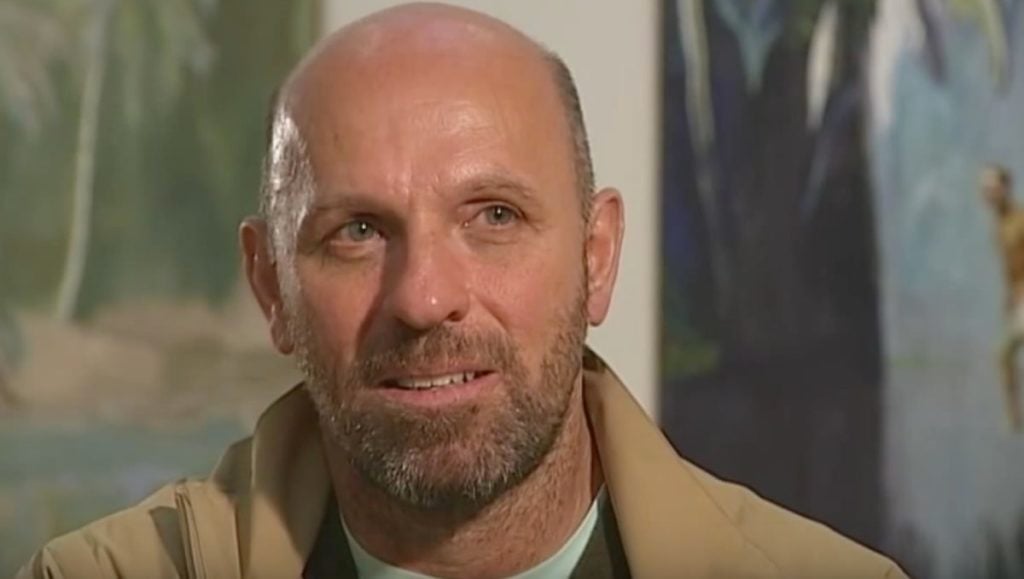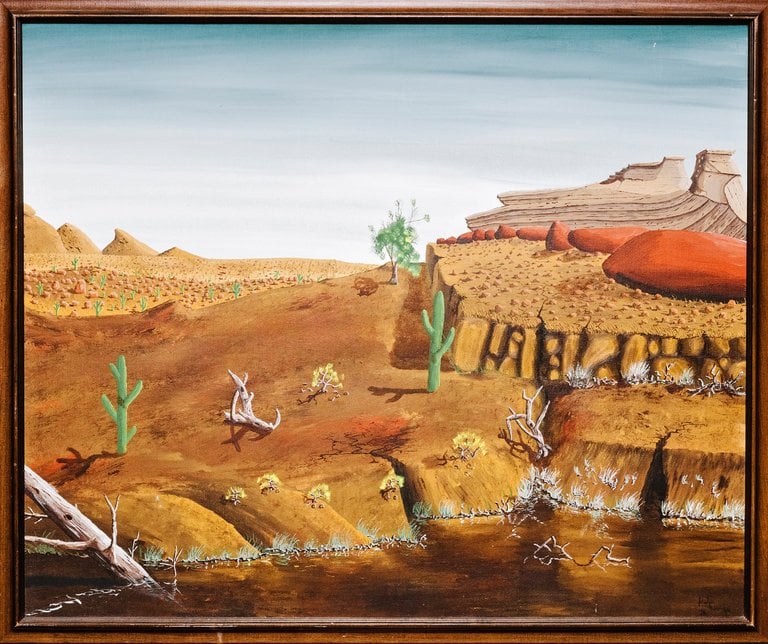Law & Politics
Chicago Art Dealer Says Painting is ‘Kryptonite’ in Peter Doig Trial
An expert valued the painting at $6-8 million if it is authentic.

An expert valued the painting at $6-8 million if it is authentic.

Janet Potter

“To Peter Doig, this painting is kryptonite,” Chicago art dealer Peter Bartlow testified in United States District Court for Northern Illinois on Thursday, in the unusual case that aims to prove whether the Scottish artist created a 40-year-old canvas signed “Peter Doige 1976.”
Doig denies having painted the desert landscape, which its owner, Robert Fletcher, claims to have purchased from him for $100 in the late ’70s. At the time, Fletcher was employed as a corrections officer at Thunder Bay Correctional Centre in Ontario, where the disputed work was created by an inmate in an art class. Fletcher lost track of the young man in the years that followed, but kept the painting.
Decades later, Fletcher contacted Bartlow, who attempted to sell the painting as Doig’s. Because of Doig’s refusal to acknowledge the painting as his own, however, that sale did not go through. Now, Fletcher and Bartlow are co-plaintiffs in the Chicago court case against Doig, and are asking for $5 million dollars in damages and a declaration from the court that the painting is authentic.

The painting in question depicts a desert landscape. Photo: ARIS Title @ARIS_ArgoGroup via Twitter.
Doig was a teenager living in Ontario in 1976, but claims that he has never been incarcerated at Thunder Bay, and never met Fletcher. Doig’s attorneys assert that they have found the real painter, a man named Peter E. Doige, who died in 2012. His half sister, Marilyn Doige Bovard, previously affirmed that the late Doige was incarcerated in Thunder Bay in 1976, and was an amateur painter. She provided the defense with her brother’s other paintings for comparison.
Expert witnesses took the stand on Thursday, as judge Gary Feinerman presided over a restless courtroom on the third day of the trial. The morning began with Tibor L. Nagy’s cross-examination of Bartlow, and focused on the techniques he used to authenticate the painting as Doig’s. “The Bartlow Method,” as Doig’s attorney sarcastically dubbed it, relied heavily on identifying small elements in the disputed painting that can be found in Doig’s verified work, such as the line of a skier’s right arm in a 1994 oil on canvas, Chopper, which Bartlow says is nearly identical to the ridge of a rock formation in the disputed painting.
The defense then called Richard Shiff, an art historian who calls himself “a connoisseur of [Doig’s] works.” He characterized Bartlow’s methods as “entirely unreliable,” adding: “If you go looking for coincidences, you’ll find them.” He also questioned Bartlow’s relationship with Fletcher, noting that the Chicago dealer stands to gain a 25 percent commission of the painting’s sale. “An authenticator should have no stake,” Shiff said.
Based on a conversation with Bovard and an inspection of the paintings done by Doige, Shiff asserts his “firm opinion” that Doige is the painter of the disputed painting. He cited “uniformity of the surface, consistent planar recession, and consistent illumination” as characteristics prevalent throughout Doige’s work and the disputed painting.
Victor Wiener, an art historian and former executive director of the Appraisers’ Association of America, then took the stand on behalf of the plaintiffs to appraise the disputed painting, testifying that the work is worth $50,000 to $100,000 if not claimed by Doig, and $6 million to $8 million if it is, indeed, authentic. “I would kill to own a Peter Doig,” he said, adding, “no one in the art market would consider this painted by Marilyn Bovard’s brother.”
After all was said and done on Thursday, the plaintiffs, led by William F. Zieske, rested their case; the defense will present testimony from nearly a dozen witnesses today—including Marilyn Doige Bovard.